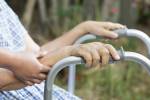Report finds wealthy patients may be favored on organ transplant wait lists
It is no surprise that patients who are on a wait list for an organ transplant -- generally in dire health -- would want to have their names on wait lists at as many transplant centers as possible.
But a new report raises questions about whether this practice of multiple listing is taking organs away from patients with lower incomes who might not be able to bear the cost of traveling to other transplant centers out of their area.
Researchers at Columbia University used data from the United Network for Organ Sharing, a nonprofit organization that manages the organ transplant system in the United States.
From 2000 to 2013, the study looked at the 33,928 patients on heart transplant wait lists; 24,633 on lung transplant wait lists; 103,332 on liver transplant wait lists; and 223,644 on kidney transplant wait lists. Of those candidates for heart, lung, liver and kidney transplants, 2%, 3.4%, 6% and 12%, respectively were on more than one wait list.
The researchers were troubled to find that, at least for heart transplant candidates, the extra lists that they joined had shorter wait times.
The median wait time for a new heart was 105 days for the second list, compared with 151 days for the original list. They have not yet looked at how wait times for the other organs (liver, lungs, kidneys) compared between the original and secondary lists.
"Multiple-list patients migrate to centers with shorter wait times," said Dr. Raymond Givens, an advanced heart failure and transplant fellow at Columbia University Medical Center. "The concern is that they are essentially delaying the transplant of someone who has lower priority at the (second) center."
Givens is the lead author of the study, which was presented on Monday at the American Heart Association annual meeting and not yet peer reviewed or published in a scientific or medical journal.
The decision about which patient should receive a heart, lung or liver donation is based largely on objective criteria such as who on the wait list is sickest. For kidneys, priority is given to patients who have been on the list the longest because they can sustain on dialysis, although that system could soon change.
However, when it comes to choosing between patients who have similar levels of medical urgency, "a lot depends on how much your physician advocates for you, (based on) my perspective working in heart transplants," Givens said.
"I think what is often happening, especially for heart transplants, is that when (the committee of physicians that prioritizes patients) sees a person come to their center, there is this idea that this person has come a long way (and) we really ought to give them the best shot of getting a transplant," Givens said.
There were also suggestions in the current study that patients on multiple wait lists tended to have higher socioeconomic status. The researchers did not have information about the income of patients, but they were able to see from the database that multiple-listed patients lived in ZIP codes that had higher income levels on average.
"You have to have the money to pay for travel, and if (the transplant center) is sufficiently far away, to pay for temporary housing," Givens said. He and the co-authors of the study found that the distance between the transplant center where patients were first listed and the second center was about 400 miles for heart transplant candidates. Very few patients were on more than one list.
Patients on multiple wait lists were also more likely to have more education and to have private insurance than those on just one list.
There are a number of factors that play into how likely a candidate for an organ transplant is to join a second wait list, not just finances and education, said Jeffrey Kahn, professor of bioethics and public policy at Johns Hopkins University. For example, some advocates at transplant centers might be more likely than others to push for patients to join a second list, Kahn said.
But do multiple wait lists help individuals?
The real question is whether patients who are on multiple lists have shorter wait times than those who are not, Kahn said. The researchers are working on teasing apart the data to get at this question. (The findings of the current study pertaining to heart transplant candidates will be published in a peer-reviewed journal in December.)
For his part, Kahn does not think patients who are on multiple lists will really affect how long the rest of the patients have to wait for heart, lung or liver transplants, which is highly dependent on how sick patients are. However, for kidney transplants, it may be more likely to have an effect.
"We have considered multiple listings a few times. Should we limit it? Should we eliminate it?" said Joel Newman, assistant director of communications at the United Network for Organ Sharing, which provided the data used in the current study. "The patient community says this is a patient's right and something that they should be able to do," Newman said.
In addition to how sick patients are, wait times for transplants are largely determined by where patients live, Newman said. Organs are usually given to patients locally, potentially making patients wait a long time who are in regions of the country with low availability. There are shorter wait times for liver transplants in Florida and the Midwest than in California and New York, for example, because of factors such as motorcycle helmet laws.
The United Network for Organ Sharing is exploring the possibility of making the geographic boundaries that define how organs are distributed more flexible, Newman said.
If it does turn out that the practice of multiple listing makes some patients have to wait longer for organ transplants, it is probably not going to have as big an impact as other factors, Givens said.
"The ultimate solution to all of this is if we had more donors, (but) people are reticent to donate organs (when they die) partly because they don't think their organs are going to be used fairly," Givens said.
Although the current study could add to this suspicion, it will hopefully bring light to a potential problem and get people talking about how to address it, he said.




























